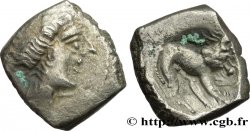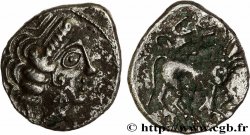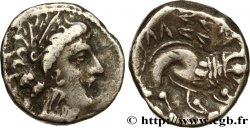v32_0824 - ITALY - TRANSPADANE AREA - CELTO-LIGURIANS “Drachme légère”, imitation de Marseille
MONNAIES 32 (2007)
Starting price : 200.00 €
Estimate : 350.00 €
unsold lot
Starting price : 200.00 €
Estimate : 350.00 €
unsold lot
Type : “Drachme légère”, imitation de Marseille
Date: IIIe-IIe siècle avant J.-C.
Metal : silver
Diameter : 16 mm
Orientation dies : 3 h.
Weight : 2,62 g.
Rarity : R2
Coments on the condition:
Très bel exemplaire, frappé sur un flan large, avec un éclatement de frappe devant le menton. Revers complet et d'un très beau style. Revers de frappe un peu molle, mais recouvert d'une très belle patine irisée de collection ancienne
Catalogue references :
Obverse
Obverse legend : ANÉPIGRAPHE.
Obverse description : Tête de Diane laurée à droite.
Reverse
Reverse legend : LÉGENDE STYLISÉE.
Reverse description : Lion stylisé à droite.
Reverse legend : MSSLL
Commentary
Au droit, la tête a des pendants d'oreille et un collier. Le style du droit est encore très classique, très proche du prototype.








 Report a mistake
Report a mistake Print the page
Print the page Share my selection
Share my selection Ask a question
Ask a question Consign / sell
Consign / sell
 Full data
Full data









